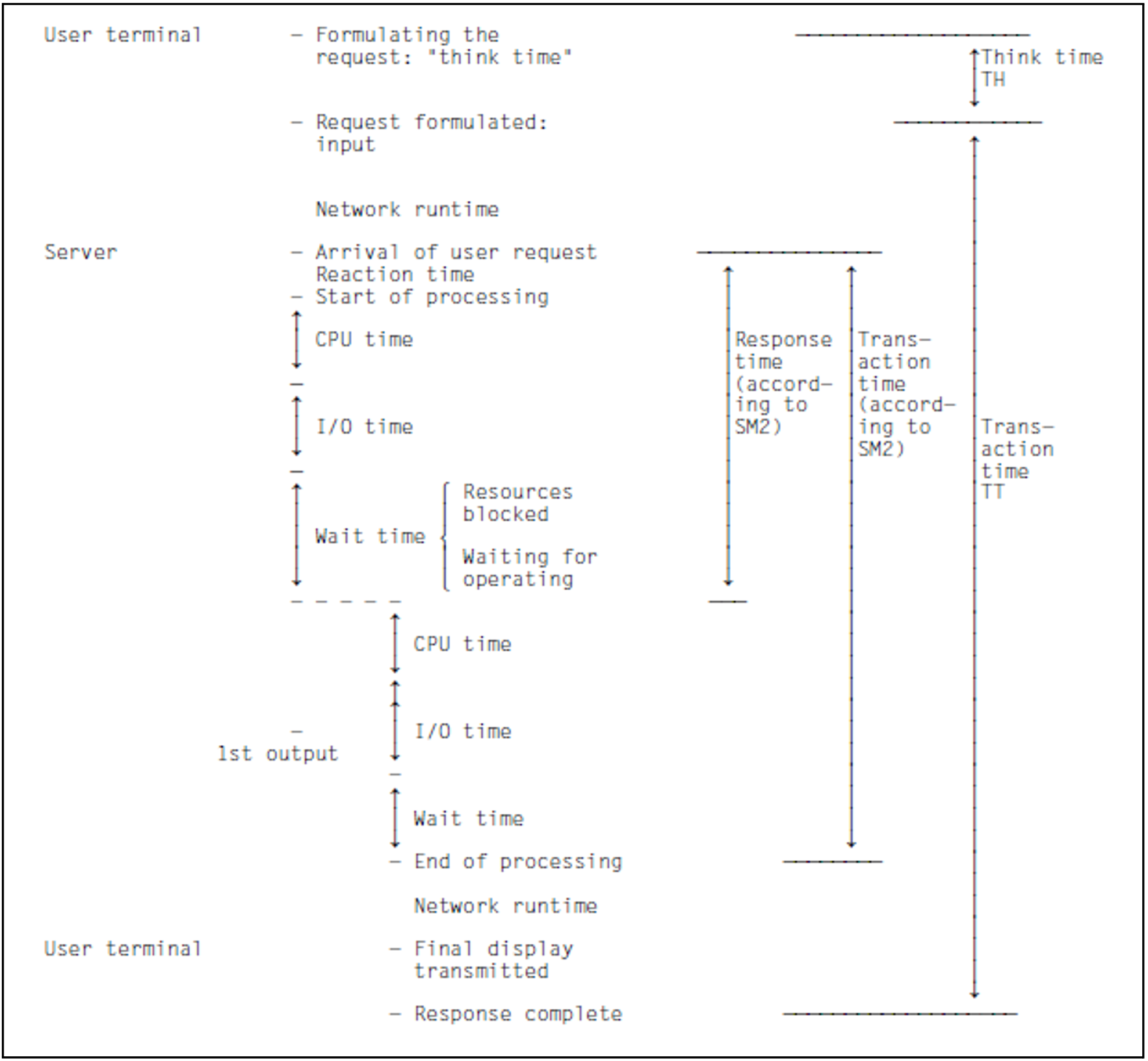In both transaction and interactive mode, the unit of IT work is the transaction. User requests in the form of inputs are represented in the system by means of transactions.
In TP mode (also known as transaction mode or inquiry and transaction mode) the terminal user can only communicate with programs that have been predefined by the application. Normally, a large number of data display terminal users work with a relatively small number of application programs.
In interactive mode (also known as dialog mode or timesharing mode), each terminal user formulates his/her own application, which is then used to solve the particular problem in dialog. Programs used to control the individual dialog applications are normally system programs for creating, testing and modifying files or programs.
The time span between the user's input and the end message from the system is referred to as the transaction time. It may be made up of a number of individual responses, each of which has its own response time.
Characteristic values in an online application
Transaction rate:
Sum total of successfully terminated transactions per unit of time.Response time:
Time taken by one processing operation by the server.Number of terminals
(equivalent to the number of active terminal users).Efficiency per terminal.
Diagram of time definitions
Figure 1: Time definitions in an online application
The time definitions shown (response time, transaction time, think time) and the transaction rate can be recorded by the SM2 monitoring program BCAM-CONNECTION, but only for applications that work with the BCAM transport system via the IDCAM or ITIAM program interface.
For applications that work with the BCAM transport system via the SOCKETS program interface, the SM2 monitoring program BCAM-CONNECTION returns connection-specific values via PORT numbers:
INPROC:
Time from the receipt of a message by BCAM until it is fetched by the application. The INPROC time comprises the INWAIT time (i.e. the time between BCAM indicating that the message has arrived and the application fetching the message).REACT:
Time between the send call and the immediately preceding receive call of an application. In TP mode this time can be regarded as the response time.OUTPROC:
Time from the send call until the message’s last byte is transferred to the network.
The TCP transport service works on a stream-oriented rather than a message-oriented basis. It is therefore not possible to obtain the transfer time through BCAM for transactions with several responses per input. Nor is the think time recorded.
If the input message length is short (< 500 bytes), the number of TSDUs received (Transport Service Data Units; jobs to BCAM) per second can be interpreted as a measurement of the transaction rate.
The measured values INPROC, INWAIT, REACT and OUTPROC are also obtained for applications that work with the BCAM transport system via the ICMX, IDCAM and ITIAM program interfaces.

